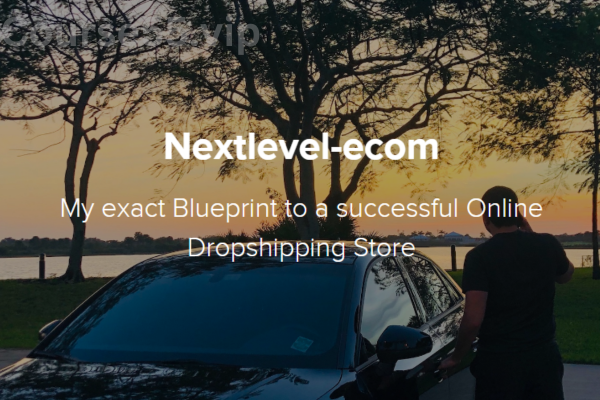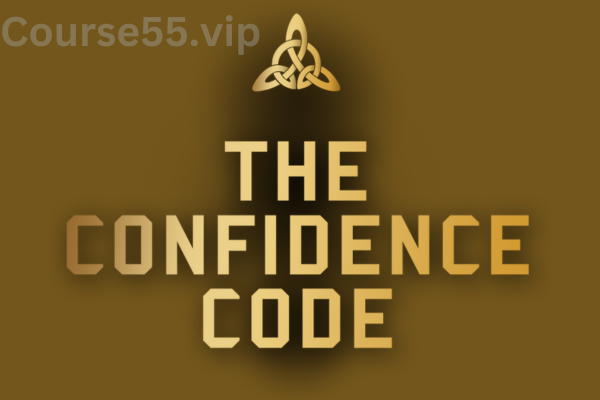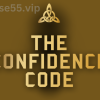-
×
 Invincible - The Secret Anciet Dao of Effortless Attraction By David Tian
1 × $15.40
Invincible - The Secret Anciet Dao of Effortless Attraction By David Tian
1 × $15.40 -
×
 New Ways to Target the Treatment of Trauma By Bessel van der Kolk - NICABM
1 × $23.10
New Ways to Target the Treatment of Trauma By Bessel van der Kolk - NICABM
1 × $23.10 -
×
 Nextlevel-ecom By Chad Friedman
1 × $15.40
Nextlevel-ecom By Chad Friedman
1 × $15.40 -
×
 Legal Issues in Behavioral Health Maryland: Legal and Ethical Considerations By Lois Fenner - PESI
1 × $23.10
Legal Issues in Behavioral Health Maryland: Legal and Ethical Considerations By Lois Fenner - PESI
1 × $23.10 -
×
 Using EMDR Across the Lifespan By Robert Tinker - PESI
1 × $23.10
Using EMDR Across the Lifespan By Robert Tinker - PESI
1 × $23.10 -
×
 Mindfulness-Based Stress Reduction for Teens By Gina Biegel - PESI
1 × $23.10
Mindfulness-Based Stress Reduction for Teens By Gina Biegel - PESI
1 × $23.10 -
×
 Attachment Focused Therapy: Trauma Related Disorders in Children & Adolescents By Daniel Hughes - PESI
1 × $23.10
Attachment Focused Therapy: Trauma Related Disorders in Children & Adolescents By Daniel Hughes - PESI
1 × $23.10 -
×
 Maine Legal and Ethical Issues for Mental Health Clinicians By Susan Lewis - PESI
1 × $23.10
Maine Legal and Ethical Issues for Mental Health Clinicians By Susan Lewis - PESI
1 × $23.10 -
×
 New Rules for Treating Trauma: Integrating Neuroscience for Resilience, Connection and Post-Traumatic Growth By Courtney Armstrong - PESI
1 × $23.10
New Rules for Treating Trauma: Integrating Neuroscience for Resilience, Connection and Post-Traumatic Growth By Courtney Armstrong - PESI
1 × $23.10 -
×
 Advances in Motor Control and Learning for Neurological Rehab By Ben Sidaway - PESI
1 × $23.10
Advances in Motor Control and Learning for Neurological Rehab By Ben Sidaway - PESI
1 × $23.10 -
×
 Barb Stepp’s NLP Master Practitioner By Barbara Stepp
1 × $23.10
Barb Stepp’s NLP Master Practitioner By Barbara Stepp
1 × $23.10 -
×
 PTSD in Veterans: Impact of PTSD on Military Personnel and War Veterans and Their Families By Michael Gatson - PESI
1 × $23.10
PTSD in Veterans: Impact of PTSD on Military Personnel and War Veterans and Their Families By Michael Gatson - PESI
1 × $23.10 -
×
 Real Leadership Roadmap Course By John Addison
1 × $15.40
Real Leadership Roadmap Course By John Addison
1 × $15.40 -
×
 Transgender & Gender Non-Binary (TGNB) Clients: Clinical Issues and Treatment Strategies By lore m dickey - PESI
1 × $23.10
Transgender & Gender Non-Binary (TGNB) Clients: Clinical Issues and Treatment Strategies By lore m dickey - PESI
1 × $23.10 -
×
 Legal and Ethical Issues in Behavioral Health in South Carolina By Lois Fenner - PESI
1 × $23.10
Legal and Ethical Issues in Behavioral Health in South Carolina By Lois Fenner - PESI
1 × $23.10 -
×
 The Marriage Reset: From Obligation To Adventure By Dani Johnson
1 × $31.00
The Marriage Reset: From Obligation To Adventure By Dani Johnson
1 × $31.00 -
×
 Intermediate To Advanced Breath-Control Course By Simon Borg-Olivier
1 × $39.00
Intermediate To Advanced Breath-Control Course By Simon Borg-Olivier
1 × $39.00 -
×
 Couples on the Brink: When Is Enough Enough? By Terry Real - PESI
1 × $23.10
Couples on the Brink: When Is Enough Enough? By Terry Real - PESI
1 × $23.10 -
×
 Black Gold Strategies by Basecamptrading
1 × $23.10
Black Gold Strategies by Basecamptrading
1 × $23.10 -
×
 What to Do in the First 90 Days of Your New Job
1 × $23.10
What to Do in the First 90 Days of Your New Job
1 × $23.10 -
×
 Acceptance and Commitment Therapy (ACT) Made Easy: Innovative Techniques for Depression, Anxiety, Trauma & Personality Disorders By Douglas Fogel - PESI
1 × $23.10
Acceptance and Commitment Therapy (ACT) Made Easy: Innovative Techniques for Depression, Anxiety, Trauma & Personality Disorders By Douglas Fogel - PESI
1 × $23.10 -
×
 Orthopedic Challenges: Expert Strategies to Avoid Harm & Enhance Healing By William Mazzocco - PESI
1 × $23.10
Orthopedic Challenges: Expert Strategies to Avoid Harm & Enhance Healing By William Mazzocco - PESI
1 × $23.10 -
×
 Fast Track 6 Figure Formula By Ray Higdon & Mark Hoverson
1 × $23.10
Fast Track 6 Figure Formula By Ray Higdon & Mark Hoverson
1 × $23.10 -
×
 Trauma-Informed Yoga for Children and Adolescents: Mind-Body Sequencing for ADHD, Anxiety and Post-Traumatic Stress By Kathy Flaminio
1 × $23.10
Trauma-Informed Yoga for Children and Adolescents: Mind-Body Sequencing for ADHD, Anxiety and Post-Traumatic Stress By Kathy Flaminio
1 × $23.10 -
×
 Outbursts, Oppositional Defiance and Frustration in the Classroom: Self-Regulation Techniques to Reduce the Frequency, Severity and Duration of Problematic Behavior By Laura Ehlert - PESI
1 × $23.10
Outbursts, Oppositional Defiance and Frustration in the Classroom: Self-Regulation Techniques to Reduce the Frequency, Severity and Duration of Problematic Behavior By Laura Ehlert - PESI
1 × $23.10
The Confidence Code By Derek Rydall
$197.00 Original price was: $197.00.$15.40Current price is: $15.40.
In-Depth Review of “The Confidence Code” – Digital Download!
The Confidence Code By Derek Rydall
Overview

In-Depth Overview of “The Confidence Code”
In today’s rapidly evolving society, confidence is a key trait that often determines whether individuals thrive or remain stuck. The Confidence Code, authored by Katty Kay and Claire Shipman, provides an in-depth look into the nature of confidence, particularly in women. Through a blend of neuroscience, psychology, and real-life examples, the authors dissect the essence of confidence and offer strategies for cultivating it. This review delves into the book’s core concepts, emphasizing its relevance in understanding confidence dynamics, while also touching on the insights of Derek Rydall, whose work on personal empowerment complements the ideas shared by Kay and Shipman. This examination offers readers valuable insights into how they can strengthen their own confidence in both personal and professional contexts.
Reexamining the Nature of Confidence Through Research
Often, confidence is considered something innate—either you have it, or you don’t. Kay and Shipman challenge this perspective, citing research that suggests confidence is shaped by a complex combination of external factors and personal experiences, not just genetic predisposition. This nuanced understanding opens up the possibility for confidence to be developed and nurtured over time. The authors present research from various fields, including psychology and neuroscience, which illustrates how societal influences, upbringing, and personal life experiences shape one’s confidence.
A key focus of the book is the noticeable difference in confidence levels between men and women. The text highlights studies showing that men typically display higher levels of confidence, often because societal norms encourage them to be assertive and take risks from an early age. In contrast, women are often conditioned to be more self-doubting and perfectionistic, which leads to lower confidence levels and hesitancy to take risks. This gap is primarily a result of socialization rather than inherent differences between the sexes. By understanding the roots of this gap, readers can realize that confidence can be nurtured, especially when supported by a positive environment and mindset.
Actionable Tips for Enhancing Confidence
One of the strongest aspects of the book is the actionable advice it provides, particularly for women looking to increase their confidence. Kay and Shipman stress the importance of stepping away from people-pleasing behaviors and focusing on authenticity as the cornerstone of genuine confidence. Moving away from seeking external validation toward embracing self-acceptance is a crucial shift. The authors lay out several strategies designed to help women take control of their lives in meaningful and empowering ways.
The following are some of the book’s key recommendations:
-
Take Risks: Engaging in both large and small risks is vital for expanding one’s comfort zone. Taking on challenges is essential for growth and resilience.
-
Reframe Failure: Embracing failure as part of the learning process helps develop a healthier relationship with setbacks. Failure should be viewed as an opportunity for growth rather than something to fear.
-
Challenge Negative Thoughts: Combatting negative self-talk is crucial. The book suggests techniques to replace self-doubt with empowering affirmations that build inner confidence.
-
Seek Supportive Relationships: Surrounding oneself with a network of positive, encouraging individuals fosters a sense of security and belonging, which is instrumental in building confidence.
Understanding Confidence Through Neuroscience
In addition to its exploration of psychological and social aspects, The Confidence Code delves into the neuroscience of confidence. While genetics may play a role in predispositions to confidence, Kay and Shipman emphasize that environmental factors are far more influential. The authors reference studies showing how the brain’s wiring is shaped by life experiences and external environments. This concept underlines the importance of creating spaces that nurture personal growth and empower individuals, especially women, to reach their potential.
The book explains how psychological and neurological research reveals that engaging in activities that challenge one’s comfort zone can trigger neural changes that ultimately lead to increased confidence. The influence of encouragement and positive feedback on brain activity also highlights the scientific underpinnings of the strategies recommended in the book.
Key Insights from Neuroscience:
-
Genetic Influence: Research shows that genetics may influence an individual’s baseline level of confidence, but environmental factors—like upbringing and peer influence—are much more significant.
-
Brain Plasticity: The brain’s capacity for change means that through deliberate effort, people can alter their confidence levels and build neural pathways that support risk-taking and resilience.
Connections to Derek Rydall’s Empowerment Philosophy
While The Confidence Code primarily explores the research and ideas of Kay and Shipman, Derek Rydall’s work on personal empowerment aligns closely with the themes of confidence-building discussed in the book. Rydall stresses the importance of self-awareness and embracing one’s authentic self as essential components of empowerment. His approach resonates with the authenticity that Kay and Shipman advocate for in building confidence. Both Rydall and the authors of The Confidence Code agree that confidence is not a fixed trait but an ongoing journey of self-acceptance and personal growth.
A comparison of the two philosophies reveals several overlapping themes:
| Aspect | Kay & Shipman (The Confidence Code) | Derek Rydall |
|---|---|---|
| Core Message | Confidence is something that can be developed through proactive efforts. | Empowerment arises from deep self-awareness and embracing authenticity. |
| Emphasis on Risk | Encouragement to face risks and challenges head-on. | Risks are opportunities for personal growth and transformation. |
| Self-Talk | Emphasizes the importance of challenging and reframing negative thoughts. | Advocates for the use of affirmations and positive self-talk. |
| Supportive Environments | A network of supportive individuals is key to fostering confidence. | Empowerment thrives in a nurturing and supportive community. |
Both perspectives enhance our understanding of confidence and offer readers actionable steps to take control of their personal growth.
Final Thoughts
In conclusion, The Confidence Code by Katty Kay and Claire Shipman offers a groundbreaking exploration into the nature of confidence, particularly for women who face societal pressures that often undermine their assertiveness. By examining the psychological, neurological, and experiential foundations of confidence, the authors provide a comprehensive approach to understanding and cultivating this essential quality. The emphasis on risk-taking, authenticity, and the power of supportive environments offers readers valuable tools to build their confidence.
In harmony with the empowering ideas shared by Derek Rydall, this book is more than just a theoretical exploration—it’s a call to action. Confidence, as the authors demonstrate, is something that can be actively developed and nurtured through commitment and engagement with life’s challenges. For anyone seeking to understand and enhance their confidence, The Confidence Code is an indispensable resource offering both inspiration and practical guidance for personal growth.
Frequently Asked Questions:
Business Model Innovation: We operate a group buying strategy, allowing participants to share costs and access popular courses at reduced prices. This model benefits individuals with limited financial resources, despite concerns from content creators about distribution methods.
Legal Considerations: The legality of our operations involves complex issues. Although we don’t have explicit permission from course creators to resell their content, there are no specific resale restrictions stated at the time of purchase. This ambiguity creates an opportunity for us to provide affordable educational resources.
Quality Control: We ensure that all course materials purchased are identical to those offered directly by the creators. However, it’s important to understand that we are not official providers. As such, our offerings do not include:
– Live coaching calls or sessions with the course author.
– Access to exclusive author-controlled groups or portals.
– Membership in private forums.
– Direct email support from the author or their team.
We aim to reduce the cost barrier in education by offering these courses independently, without the premium services available through official channels. We appreciate your understanding of our unique approach.
Be the first to review “The Confidence Code By Derek Rydall” Cancel reply
You must be logged in to post a review.










Reviews
There are no reviews yet.